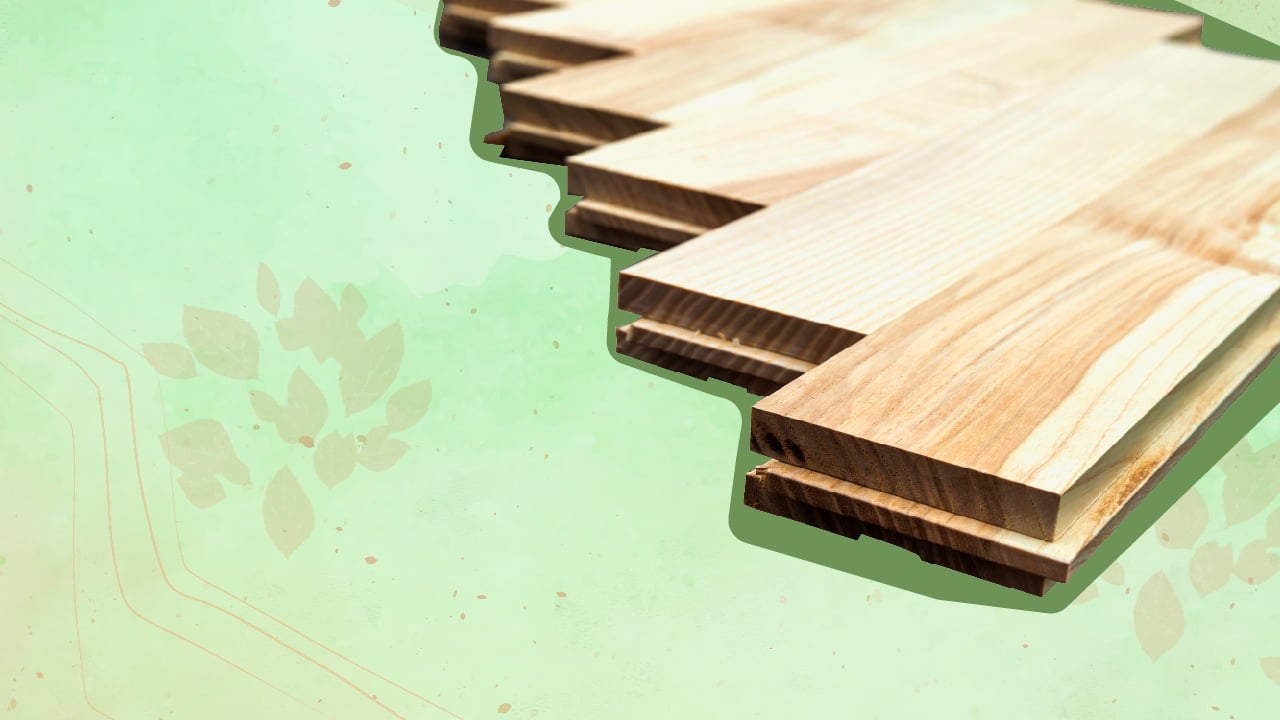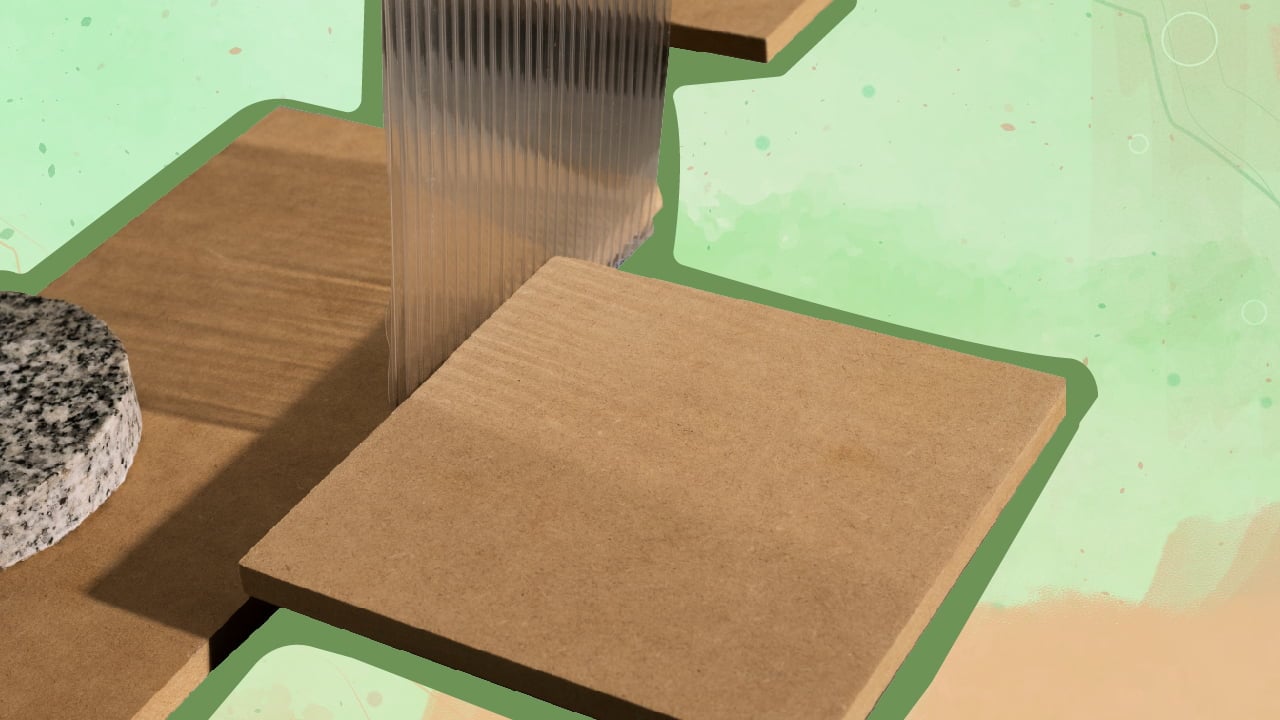How Much Weight Can Particle Board Hold | All You Need To Know
Usually, products made of particle boards can hold up to 45 lbs. However, the integrity of particle boards largely depends on the manufacturer, the materials used in construction, how and where they are used, etc. Particle boards are used as lightweight household solutions, but it is often difficult to find the best screws for a […]

Usually, products made of particle boards can hold up to 45 lbs. However, the integrity of particle boards largely depends on the manufacturer, the materials used in construction, how and where they are used, etc.
Particle boards are used as lightweight household solutions, but it is often difficult to find the best screws for a particle board and determine how much weight it can hold.
Surprisingly, despite being less durable than medium density fiberboard, when used in combination with other solid wood products, particle boards can hold a lot of weight. So, here’s a breakdown of how much weight this affordable yet functional engineered wood product can hold…
What Is A Particle Board?

Particle board is a low-density fiberboard or chipboard, mostly used in making doors, false ceilings, parquet floorings, and flat pack furniture like kitchen cabinets, bookshelves, etc. It is made of waste wood chips, sawmill shavings, and sawdust. These wooden parts are bound together with Urea Formaldehyde or any other synthetic resin or binder.
Types Of Particle Boards
1. Cement-bonded Particle Board
This type of particle board contains 60% of portland or magnesium-based cement. Then the waste wood chips and wood fibers make up 20% of the composition, with the rest being water.
As a result, this type of particleboard is highly moisture-resistant, making it suitable for constructing walls, floorings, and ceilings. This material also repels fire, rot, and termites, so it is a versatile material for making furniture products.
2. Laminated Particle Board
This particle board features a layer of thin laminate sheet, making it more durable and visually appealing.
3. Melamine Particle Board
The surface of this particle board boasts a mixture of melamine and decor paper. And the construction of this wooden product includes wax emulsion and melamine-urea formaldehyde resin. Thanks to these materials, melamine particle boards resist water damage and scratches.
Plus, it is available in various attractive colors and textures, making it the top pick for furniture, wardrobes, wall paneling, etc.
4. Veneered Particle Board
As the name suggests, this variant of particleboard has a thin layer of wood veneer attached to the surface. One of its biggest advantages is its durability against warping, compared to other types of particle boards.
5. Single-Layer Particle Board
When same-sized wood particles are pressed together such that they form a flat surface, they form a single-layer particle board. While they are water-resistant, they are not completely waterproof. However, the flat surface can be plastic laminated or veneered to enhance its durability.
6. Graded-Density Particle Board
This type of particle board is made of thin layers of fine wood particles and coarse wood fibers. It can be used to make wooden furniture and cabinets.
7. Three-Layer Particle Board
Particle boards containing layers of highly dense wood particles and large wood particles form this three-layer variant. They contain generous amounts of resin and feature a smooth surface, ideal for painting.
How Much Weight Can Particle Boards Hold?
To understand this more deeply, know that a particle board has a Modulus of Rupture (MOR) value ranging from 16-22 MPa. MOR determines the bending strength of materials, with the value of the particle board being equivalent to 224 kg/cm². Hence, a regular particle board desk can hold approximately 32 lbs.
However, when mixed with other wood products like medium density fiberboard (MDF) and plywood, particle boards may support up to 45 lbs.
As such, MDF can hold approximately 80-300 lbs per square foot depending on the quality of screws used. Similarly, ½-inch plywood can hold up to 35 lbs while the same material of 1-inch thickness can support up to 164 lbs.
Basically, the strength of the final structure depends on its thickness and the manufacturer as well. So, even though particle boards are more affordable than other materials, they are not always inferior.
Does Particle Board Break Easily?
Unfortunately, yes. Since particle boards are made of wood composite held together with resin, they cannot support heavy loads. The lack of a wood grain structure also lowers its strength.
Another major flaw of particle boards is their inability to resist scratches. Even the edges and corners of any product made of particle wood can get scratched and end up getting rough.
Not to forget, finding suitable screws for particle boards is a Herculean task due to the low integrity of the board. As such, specialized fasteners like chipboard screws are one of the few types of screws that can be used on a particleboard product.
Last but not the least, water damage is the most common culprit behind easily breakable particle boards. So, if you live in an extremely humid environment, you may notice particle board products losing their integrity and functionality sooner than, say, MDF boards.
How Long Can Particle Board Last?
Flat pack furniture made of particle board may not last more than a year. However, if manufactured well, they may last for upto five years. Not to forget, the durability of the product will also depend on how you use it.
Warning
Always check for warranties when buying particle board products. Most of those sold online do not have any form of warranty at all, so you must stay cautious.
How To Make Particle Boards More Durable?
Since moisture and humidity are major deterrents to the integrity of particle boards, you must avoid these two factors to ensure they last long. I recommend using suitable sealants (consult the manufacturer for this) around the edges and the surface of the particleboard product.
Framing or bracing the product with aluminum can also help increase its durability. Other products that can be helpful in this regard are plain lacquers and sanding sealers. Alternatively, you can laminate the particle board for more protection.
Tip
Try stacking two or more particle boards together, or use them in conjunction with plywood and MDF boards for additional support.
How To Repair Peeling Veneer On Particle Board Cabinets
Given below are some foolproof methods of repairing peeling veneer on particle board cabinets:
Method 1
Start by holding back the peeling laminate with a pair of pliers and then apply contact cement. I suggest using a paintbrush to do so.
Warning
Ensure that you apply the cement on the particle board and not on the peeling laminate. Wait for the cement to dry completely before pressing the peeling laminate back to its position, or else your efforts will go in vain.
I further recommend using a J roller to ensure all the peeling portions are back in place.
Method 2
If the peeling occurs in difficult parts, wherein you’re unable to clamp them together, try using a spray adhesive. Just pull the peels apart, spray the adhesive, and press them all together. Again, use a J roller to ensure a smooth surface.
Method 3
If the peeling laminate is too damaged and cannot stick to the particle board, no matter how hard you try, it’s best to get rid of it. You can loosen the glue with a heat gun and carefully remove the damaged pieces. Thereafter, you can follow the first method to add a new lamination.
Method 4
Dry the wet particle board with a hair dryer. Once completely dry, use medium grit sandpaper to sand the particle board. You may use finer grit sandpaper towards the end of the sanding process.
Thereafter, wipe off the dust and let the particle board dry again. You can use an electric dryer or let it dry naturally.
Finally, apply a waterproofing agent and let it dry.
What Is Particle Board Good For?
1. Cheaper Than Medium Density Fiberboard, Plywood, And More
Considering the low integrity of particle boards, you may be wondering if they are even worth it in the first place. Well, they are ideal for constructing versatile work surfaces, especially for homeowners on a budget. In fact, they are often used as cheaper alternatives to plywood and MDF to reduce construction costs.
2. Lightweight And Convenient
Products made of particle board are lightweight, making them easy to move around. So, if you do not have the means to move around heavy household items, it is best to opt for particle board.
3. Smooth Surface With A Stylish Look
Particle boards can lend a minimal and tidy look to your space. And with the large variety of colors and textures available out there, you won’t have to spend a lot for a stylish household environment.
4. Eco-friendly
Interestingly, particle boards are much better for the environment since they are made of composite material and waste wood. So, when you purchase a particle board, you are less likely to cause any felling.

How Much Weight Can Particle Board Hold Conclusion
Although particle boards cannot hold heavy items, they are widely used in flooring, wall paneling, and even in the commercial industry. Hence, with proper care, well-manufactured particle boards may last longer. Just ensure you do not keep them exposed to moisture and humidity, and you’re good to go!
If you found this article informative, I recommend checking my guide on “can you paint particle board?” And with that, I’ll be signing off for the day.
Until next time!
